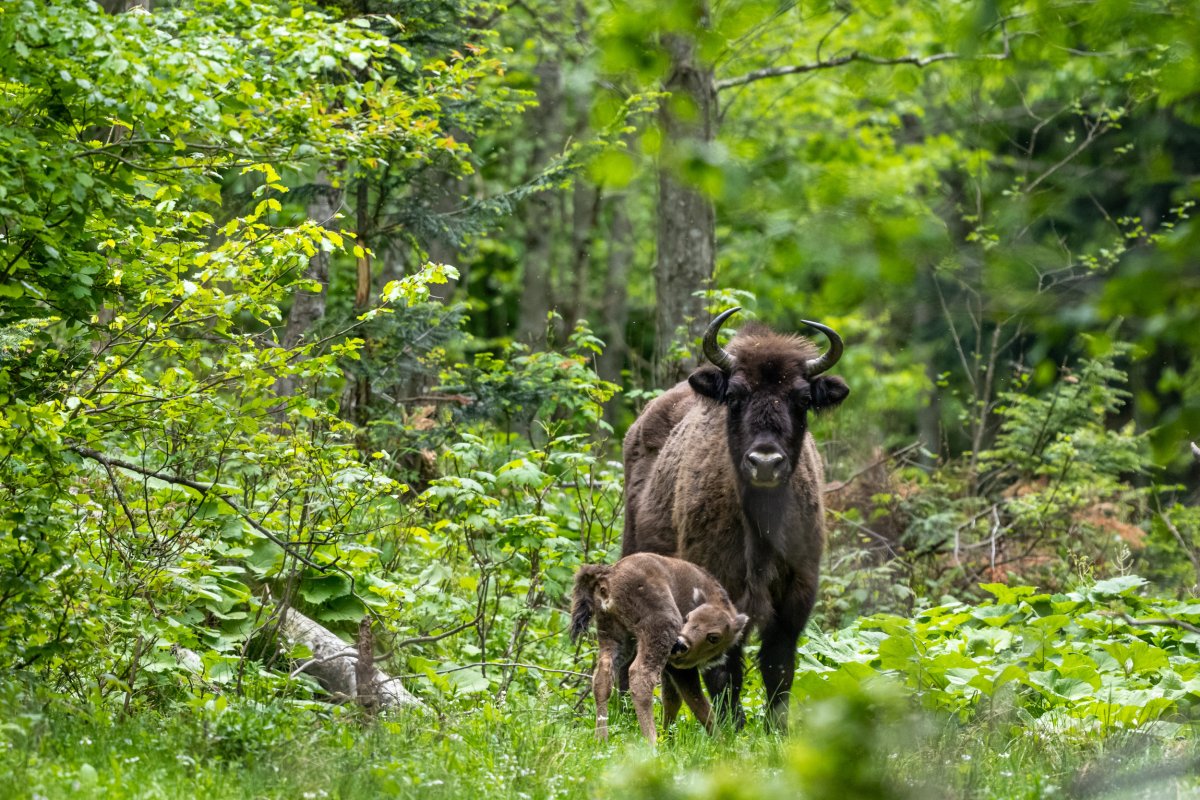A calf belonging to a species of bison that became extinct in the wild in Western Europe in the Middle Ages has been born in Switzerland.
The European bison calf was born in the Jura Mountains on July 4 as part of the Wisnet Thal project, which is based in Solothurn, northwestern Switzerland, according to a news release.
The Wisnet Thal initiative, which began in November 2022, focuses on reintroducing the European bison to the mountain range. The aim is to see whether a herd can be reintroduced to the area over a five-year period. Visitors are able to come and visit the project.
European bison, also known as wisent, died out in the wild in Western Europe in the Middle Ages. The animals currently in the trial herd consist of a four-year-old bull, three cows aged between four and six years, a calf from last year and the most recent arrival. Their habitat consists of 37 acres of forest.

Over the next five years, researchers will assess whether the bison are able to survive in the mountains, according to the project's website. Their choice of food and behavior towards people and other species in the mountains will be monitored.
The Wisnet Thal project says that while the animals are usually "shy and gentle" they can become dangerous if they provoked or disturbed while protecting their young. For this reason, they advise people to leave a large distance between themselves and the animals, especially while a mother is with a new-born calf.
Bison were once abundant across Europe but by the beginning of the 20th century had nearly been driven to extinction throughout the continent, according to non-profit organization Rewilding Europe.
This was largely caused by excessive hunting and habitat loss as human populations expanded. As well as providing meat, people used their hides and their horns were turned into drinking vessels.
The last wild European bison was shot in 1927 at a time when there weren't even 60 still alive in zoos and private parks.
The European bison is not the same as bison found in North America, differing in appearance and size. Bison in America tend to be much larger than European bison and are also far more abundant. They are commonly found in National Parks such as Yellowstone, which has a population of close to 6,000.
Do you have an animal or nature story to share with Newsweek? Do you have a question about European bison? Let us know via nature@newsweek.com.
Uncommon Knowledge
Newsweek is committed to challenging conventional wisdom and finding connections in the search for common ground.
Newsweek is committed to challenging conventional wisdom and finding connections in the search for common ground.
About the writer
Robyn White is a Newsweek Nature Reporter based in London, UK. Her focus is reporting on wildlife, science and the ... Read more
To read how Newsweek uses AI as a newsroom tool, Click here.






